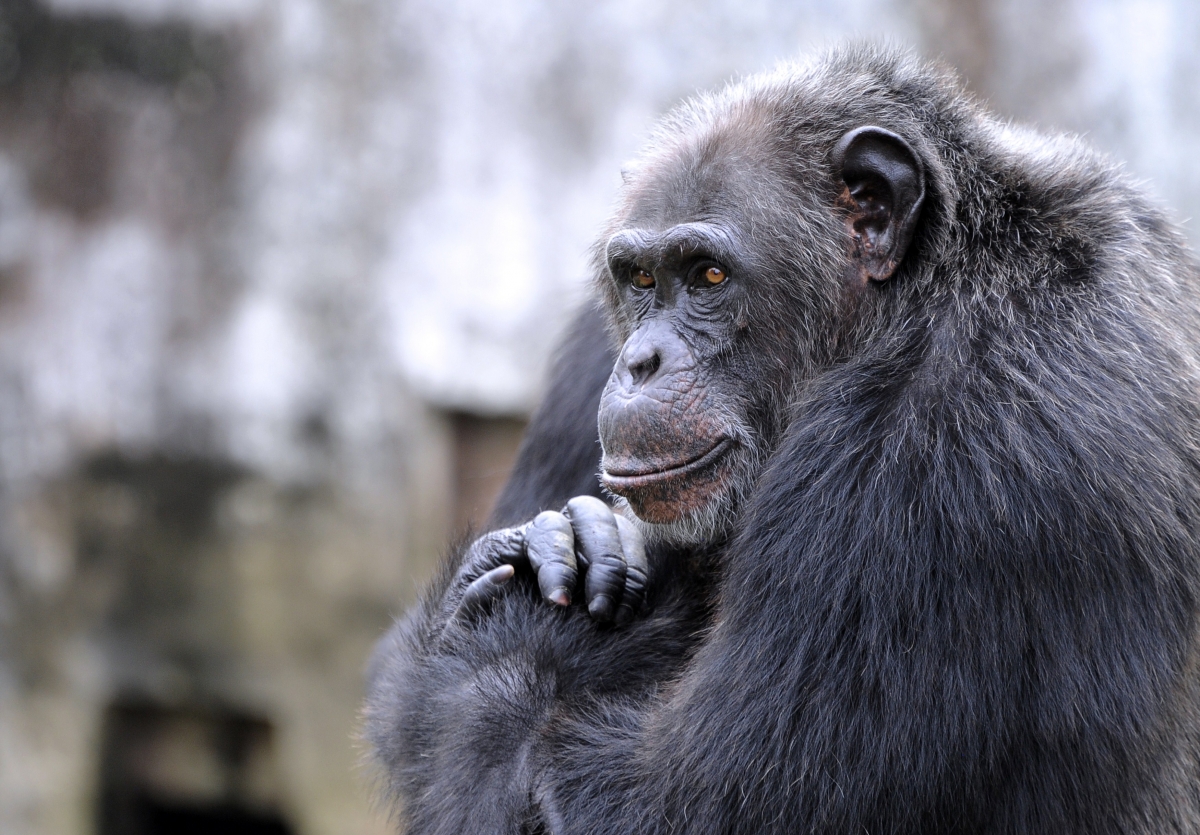
"Further research must show to what extent these structural sequences signal predictable meanings." "From a purely structural perspective, the capacity to organize single units into structured sequences offers a versatile system potentially suitable for expansive meaning generation," explained the authors of the study, which analyzed chimpanzees in Côte d'Ivoire.

Indeed, the way that the chimpanzees combined those vocal sequences suggests they can create new words from them. While the scientists were only able to connect those vocal sequences to specific objects and actions, that does not mean chimpanzees only have 390 words. In 2022 a study published by the journal Communications Biology demonstrated that chimpanzees can produce as many as 390 unique vocal sequences. It follows a recent flurry of recent interest in the complexities of primate language. The study is remarkable for what it says about the evolution of language and of the intelligence of the great apes. Want more health and science stories in your inbox? Subscribe to Salon's weekly newsletter The Vulgar Scientist.

"Humans and chimpanzees last shared a common ancestor approximately 6 million years ago," study last author, University of Zurich professor professor Simon Townsend, explained in a statement. "Our data therefore indicate that the capacity to combine meaningful vocalizations is potentially at least 6 million years old, if not older."

They speculate that this has implications far beyond simply understanding chimpanzee language it suggests that the complex compositional structures that define human language did not originate with our species, "but that the cognitive building-blocks facilitating syntax may have been present in our last common ancestor with chimpanzees." "We propose the 'alarm-huu + waa-bark' represents a compositional syntactic-like structure, where the meaning of the call combination is derived from the meaning of its parts," the authors explain in their study. These two phrases might form the basis of a proto-sentence in their language, researchers think. Importantly, they found that the chimpanzees only reacted to this way when they heard that specific combination of calls merely giving one of the "waa-barks" in isolation, or one of the "alarm-huus" in isolation, was simply not as effective. As the authors explained, they had predicted that other chimpanzees in the group would join the call expressing alarm and seeking help once it was heard. Just as humans might react urgently if they heard a person shout "Oh my gosh! Help!", the chimpanzees were alarmed when scientists pranked them with the chimp version of that phrase. "Secrets of the Elephants" reveals their uncanny ability to grieve and empathize What happened next changed the way we understand the evolution of human language. Hence, in a recent study published by the journal Nature Communications, researchers placed fake snakes among wild chimpanzees in Uganda to see if they would respond in the same way as humans - communicating the specific danger, then working together to manage it. If you're chatting idly with your neighbors and suddenly see something dangerous - say, a rattlesnake - mutual yells and shouts abound and, after the surprise of the snake abates, humans move to recruit others to deal with the problem.īut whether all animals work and communicate this way, or just humans (or our ape relatives), is an open question. That, it seems, is the unique power of human language, an ability that provides a strong evolutionary advantage.

That may be true for most social animals, but not all animals can communicate using specific nouns or verbs to refer to present dangers. Humans are not merely adept at communicating danger - it is seemingly built into our brains.


 0 kommentar(er)
0 kommentar(er)
